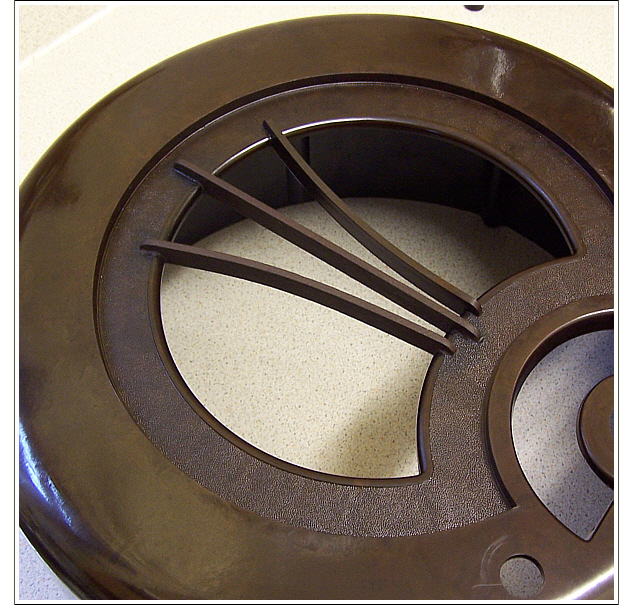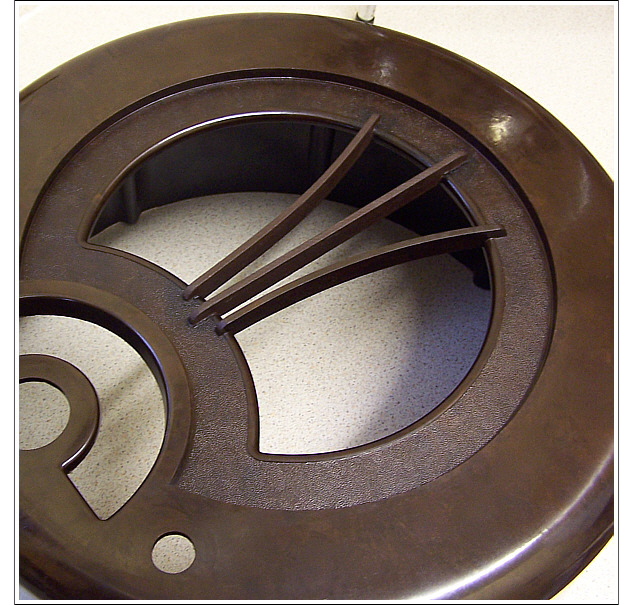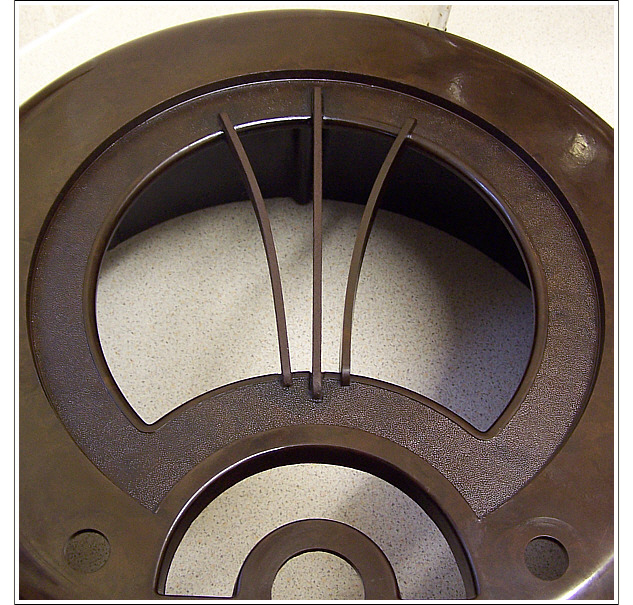
2. Fabricating the broken spars
I began by removing the chassis and speaker baffle in order to clean away the years of accumulated dirt.
I stood the cabinet in a couple of inches of warm water which had had a drop of washing up liquid added - working quickly, to minimise the amount of time the bakelite was wet, I used a small washing-up brush to get rid of the grime.
After a quick rinse I dried the case thoroughly - the entire operation taking only 10 minutes or so in total. It is important not to have the bakelite in contact with water for any longer than necessary as it is will absorb water if allowed to.
I decided to try to replace the two broken and missing bakelite bars with lengths of balsa wood of the correct thickness obtained from a local craft shop - but in order to do so I first had to cut out the remaining broken ends of the original bars from the cabinet.
Using a thin bladed hacksaw and a coping saw I notched out the bakelite taking my time not to scratch the cabinet or damage it further - after some careful sawing I eventually arrived at the required result.
At this stage I fitted the two lengths of balsa wood into the notches and fixed with superglue. I cut the wood just a shade larger than necessary to ensure a tight fit - I found that with the curved bar this extra length produced the required shape due to the tension.
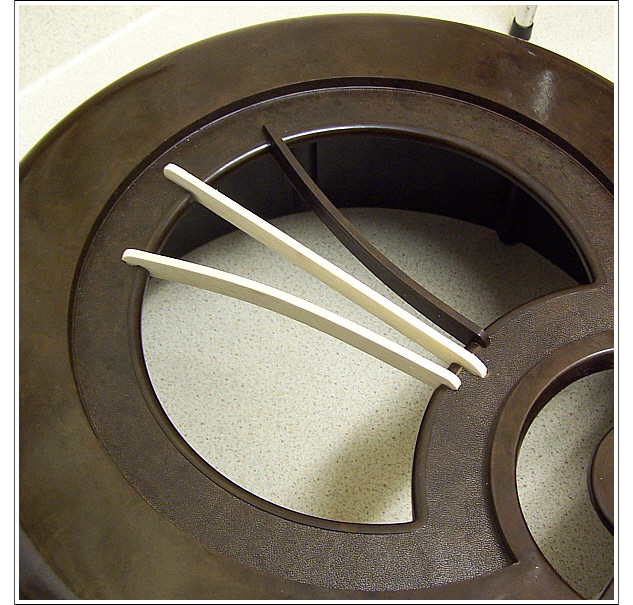
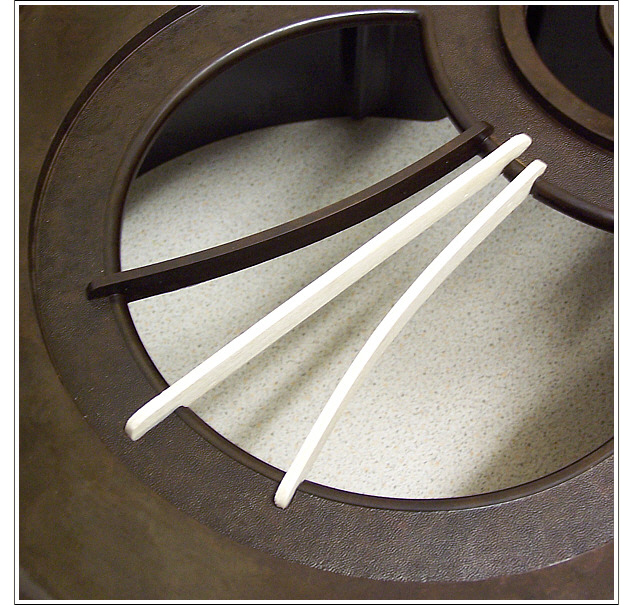
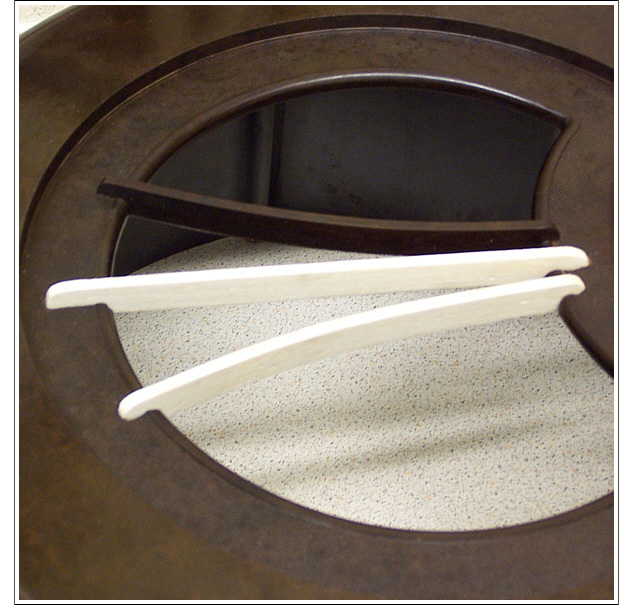
Balsa is easily shaped using fine grade glass paper and I carefully formed the rounded over ends to the two bars in this fashion. Any small gaps in the notches between the balsa and bakelite were filled with a dark brown coloured wood filler.
When I was satisfied with the appearance of the two bars I gave them both a coat of watered down PVA glue applied with a small artist's brush - once dried the PVA sealed and added a good deal of hardness and strength to the balsa.
Using small tubes of acrylic paint I mixed some red and black to give a good colour match to the bakelite of the cabinet and gave the bars a couple of coats, allowing the first coat to dry thoroughly before applying the next. When the second coat was almost dry I went over it with a thin coat of teak oil. This gave the paint a similar sheen to the original bakelite.
